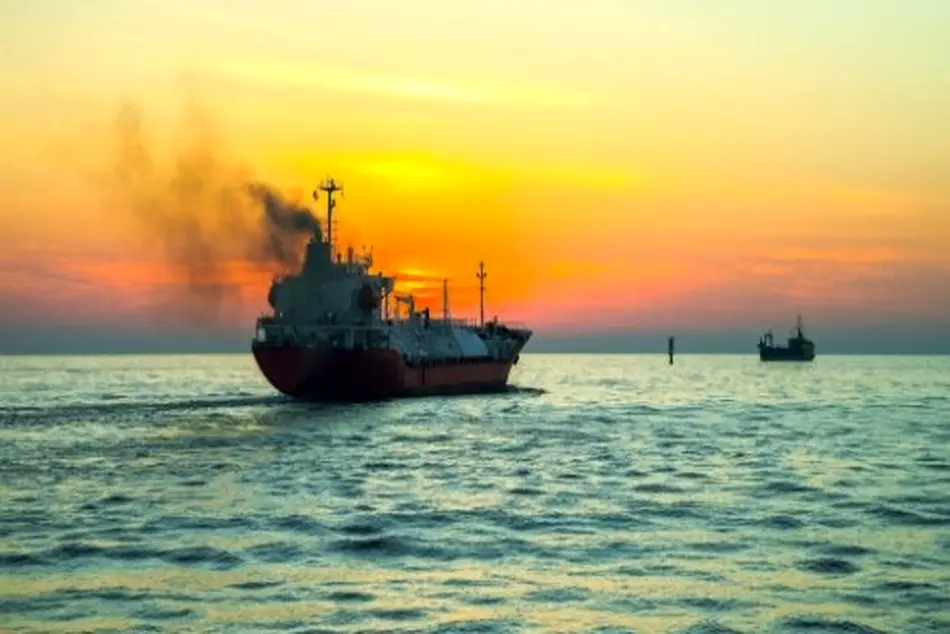Challenges in the implementation of IMO and EU/MRV Regulation

TIN news: John Kokarakis, Vice President Technology & Business Development Hellenic, Black Sea Region & Middle East, Bureau Veritas, presented the “Challenges in the implementation of IMO and EU/MRV Regulation” at the 2017 GREEN4SEA Conference. Dr. Kokarakis noted that the IMO system is simpler and efforts are performed to get some elements from the EU/MRV in order to reach harmonization. For example, issues like uncertainty of monitoring methods are not mentioned. The IMO system does not include publication of fuel consumption data under the name of ship and its publication will be anonymous whereas the EU/MRV is based on publication under the ship name. He also addressed the challenges concerning the proper preparation for the MRV.
There are two fuel consumption data collection systems, the global IMO and the regional EU MRV. It is our hope that the two systems will be aligned and harmonized. There are differences between them, but in general the IMO system is much simpler and of lower cost and administrative burden.
Given the more advanced status of the EU MRV, it will be the topic of further analysis. The target is to measure and report verified fuel consumption without unnecessary information. Such example is the estimated index value which was developed to assist in the EEDI concept. IMO at MEPC 63 has agreed that EIV is meaningless, when it comes to assessing energy efficiency and it should, thus, be deleted from the reporting requirements.
There are inherent inaccuracies and errors in the collected data. Uncertainty is governed by the precision and accuracy. Precision is how far the measurements are or what their standard deviation, from a statistical point is. Accuracy is the difference between measured and real values. Expanded uncertainty is the one with 95% confidence level. The science of metrology defines mathematical relationships for the combined uncertainty of functions, sums and products. The square root of the sum of the squares of the individual uncertainties is the well-known gaus quantratur summation.
Let’s see an example of how we estimate the uncertainty of fuel consumption when we feature a 2500-meters bunker tank with 2.5% level of uncertainty, 20 times a year with 1000 cubic meters each time with an uncertainty of 0.5% due to Coriolis mass flow meter in the barge. Computed value is 0.46%. Interestingly, if the number of bunkering events is increased keeping the same total fuel, the uncertainty is reduced and vice versa.
To convert into mass, we need to determine the density, which has a relatively higher order of uncertainty, and it is the dominant factor.
Some published values of the uncertainties associated with 4 monitor methods, can be found in the Ecofys study by Delft. Calibration of measuring equipment is necessary step in the procedures. Cross checking of the bunker delivery notes is incurrence but it must be formally done by an inspector.
The one-million-dollar question is if there is a need to convert this simple procedure into a rocket science. Presumably, default uncertainties will be defined by EU to be used by the verifiers. If lower values are to be reported from the default, they must be probably justified.
It appears that verifiers will be forced to perform a risk assessment in order to plan their actions. Control measures must be taken to lower the probability and the impact of misstatements. Redundancy in measuring modes or in the number of readings reduces the impact. Risk is the product of inherent control and failure to detect risks and must be less than 5%.
Inherent risks depend on the complexity of the system. For example, equipment malfunctions, IT black outs, wrong emission factors, missing voyages etc. Control risks are related to the procedure or lack of them there off, like lack of audits and for example number of samples given a number of annual voyages. The lower the inherent and control risks, the higher the tolerable detection risk.
Verifiers should not jeopardize their impartiality by acting as consultants and develop parts of the monitoring plans or the emission report. Remember that they are subject to annual surveillance by their accreditation body.
Risk assessment will determine the need or not for a site visit by the verifiers. It may be waved for ships of limited complexity and/or size, if all info can be obtained remotely or if the verifier possesses sufficient understanding of the vessel monitoring and reporting procedures. Verifiers can invalidate a report if errors exceed a 5% limit on the total reported emissions.
Lack of side visits must be justified. The impact is that we have cost increases of the EU MRV system. Following verification, an independent reviewer from the same company must bless it increasing cost, along with a humongous volume of required documentation. Additional data to be provided are the power speed curves from sea-trials and test-bed trials depicting the specific fuel consumption vs power. This can be used to fill data gaps. AIS data, tracking data, has been mentioned as potential means to cross-check or close data gaps.
Emission factors convert fuel-consumed into CO2 emissions. They can be acquired by fuel suppliers, by dependent laboratories or by IPCC and other data basis for hybrid or bio-fuels.
If a company did not foresee operations into EU ports, it’s not the end of the world. They must submit a monitoring plan to the verifier, not later than 2 months after the first call at the EU port. Verifiers verify procedures. Procedural implementation is addressed by the ISM indict. Bureau Veritas, aiming to reduce time and cost, has organized the MRV system via our ISM team.
A port of call at the MRV regulation is a port where the ship loads/unloads cargo and/or passengers. If one of the ports of call in a voyage is in EU, it must be reported with certain exclusions. Let’s not forget the colonies. These so-called outer territories, from Falcland Islands to New Calidonia, do count as EU ports for purpose of MRV.
The conclusion is that a simple and common procedure has been transmitted to a very complex techno-economic process, imposing significant costs and administrative burden. Imagine what will happen with the promulgated introduction of market-based measures. Whatever will happen in the near and far future, we need to remember that shipping is many things, but, for sure, it is not a cash-cow!

